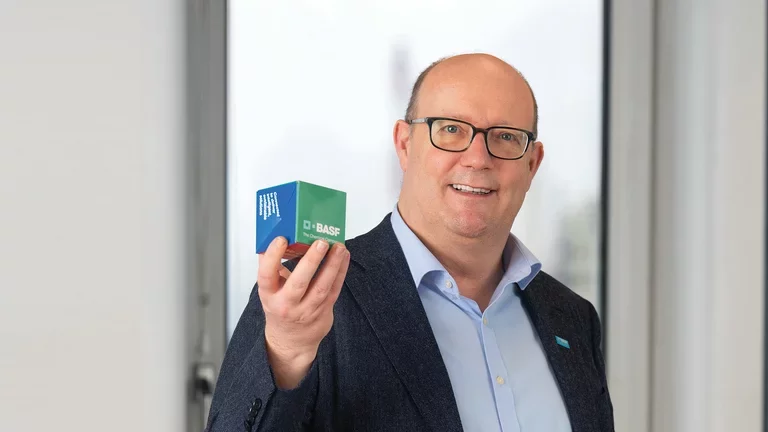Developing solutions jointly with our customers
An example with BASF
Published on April 12, 2022
3 minutes

A key technology in the long-term strategy for fighting climate change, carbon capture and storage (CCS) is at the heart of this collaboration between Air Liquide and its partner BASF.
Jan Remeysen is CEO of BASF Antwerpen, the second biggest Verbund site of BASF, the world’s largest chemical company. After receiving his PhD in Chemistry, he started his career at the company 25 years ago. Since then he has worked in multiple departments at BASF Antwerpen, as well as at the company’s headquarters in Ludwigshafen, Germany.

“Through this partnership we are able to create a large-scale structure with which we can launch the value chain process and attract other industrial players.
”
You are working with Air Liquide to implement Kairos@C, a carbon capture and storage (CCS) system in the port of Antwerp, Belgium. Can you tell us more?
We are planning to develop the world’s largest cross-border CCS value chain, including all the stages of carbon capture, from drying and compressing to liquefaction and storage at sea. Air Liquide will use its Cryocap™ technology to capture and purify the CO2, and BASF will apply its Sorbead® solution for drying the CO2 which will be transported via pipelines on both banks of the Scheldt River to a liquefaction terminal. We are tackling hard-to-abate emissions, from chemical processes where there is currently no other way of avoiding CO2 emissions. This will lead to an estimated 14.2 million metric tons of CO2 emissions avoided over the first ten years of Kairos@C’s operation. The infrastructure in the port of Antwerp will be available to other industrial players in the region as well.
That sounds like a major milestone on the route towards low-carbon industry.
It certainly is! Importantly, Kairos@C is the first complete value chain of its kind. Besides sequestering CO2 at scale from the moment we go operational, we will deliver proof of concept to other regions. Alone, this work would be impossible to do, but through this partnership we are able to create a large-scale structure with which we can launch the value chain process and attract other industrial players. The fact that we were chosen among seven selected projects, out of 300 applicants, for funding by the EU Innovation Fund is a testament to our innovation power and the maturity of this project, as well as the strength of our partnership.
How are Air Liquide and BASF working together to make this happen?
Air Liquide is contributing gas capturing and liquefaction technology expertise that is central to the process, and BASF is bringing in knowledge, experience and contacts that help Air Liquide further develop the project. We collaborate on the technical and strategic levels. We regularly review and adjust our strategy, notably through technical reviews. This is nothing new for us, as our companies have been working together in Antwerp since the early 1960s. Each partner concentrates on its own strengths, which feeds the growth of complementary expertise and a mutually beneficial relationship.

